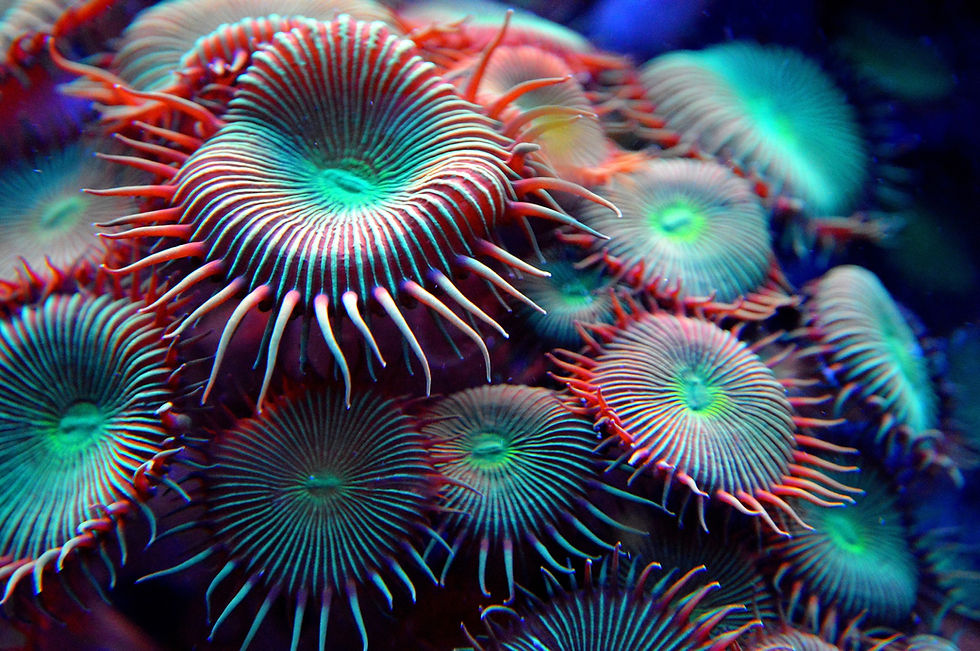The Fish Reef Project: Restoring Marine Ecosystems Around the World
- Seaside IT
- Mar 31, 2023
- 3 min read

Photo courtesy of Media from Wix
Coral reefs are not only pleasing to look at, but they are one of the most biodiverse ecosystems on the planet. They provide habitats for marine life to feed and procreate. Unfortunately, they are disappearing globally due to pollution, climate change, mining, and overfishing. Organizations like the Fish Reef Project are working to re-establish marine ecosystems by deploying reef units, which provide an area for marine life to rebuild and thrive. Founded in 2012, by Chris Goldblatt, the Fish Reef Project has successfully installed over 500,000 biogenic reefs in over 70 countries around the world such as Jamaica, Ghana, and Papua New Guinea.
This reef-restoration pilot project took place in Santa Barbara in June 2012. Two sea domes were placed in Henry’s beach on the bare seafloor. Results were astounding- after just two weeks there were visible signs of marine colonization. These domes, although successful, did have minor flaws and have since been removed, but were able to provide a baseline for future sea-installations. Scientists at the Fish Reef Project have since reconfigured the dome design to create the Sea Cave. The four years of research and development needed to produce it was well worth the effort, and is the most cutting-edge reef unit being used today. The sea cave structure features a flat-top surface big enough for kelp to settle and grow, allowing for large hold fasts. This is very important because the larger the hold, the faster root structures can be established, and the better chance the kelp has to withstand major storms. Additional improvements to the synthetic cave’s material, now chemically balanced and matched to the natural geographical p.H. of the water it is placed in. Sizes of the holes on the sea cave are big, enabling larger species to inhabit the space such as lobster. Lastly, it is very stable and can withstand a 100-year storm event. Sea Caves weigh around 2200 pounds, are about six feet by four feet and a little over two feet tall, and contain no rebar. These unique Fish Reef designs encourage the colonization of marine animals thanks to the differences in spaces, light, and water flow. Over time the structure will become fully encrusted, eventually looking like a natural habitat and not man made.
Current designs are set to be used in the Goleta Bay Reef Restoration Project which will take place in Santa Barbara, California. The Fish Reef Project is in the process of securing the proper permits that will allow them to begin. These permits include an army corp permit, state lands lease, coastal development permit and a statement from California's Department of Wildlife. This project aims to restore the 220-acre kelp forest that was wiped out following El Nino in 1983. The project is set to occur in two phases. The first phase launches a pilot program, and consists of two test acres costing an estimated $3M to complete. The second phase will consist of deploying Sea Caves throughout a 220-acre lot costing around $15M. The Fish Reef Project hopes to make this a multigenerational project, continuing as long as money and space will allow.
Huge strides when it comes to restoration of the sea floor thanks to the Fish Reef Project. For the past 8 years since July 2014, they have held an observance seat on the United Nations Seabed Authority and were voted into this spot by 170 sovereign countries. They also had a part in creating the language that went into coding for the restoration of the sea floor. They are a non-profit who without our help cannot complete their goal of restoring kelp forest and re-establishing marine ecosystems. If you would like more information about the Fish Reef Project and the work they are doing to preserve and rehabilitate our oceans, please visit their website to petition your support.
References
Fish Reef Project. (n.d.). Retrieved from https://fishreef.org/
Fish Reef Project. (n.d.). What is a sea cave?. https://fishreef.org/2021/04/what-is-a-sea-cave/
Fish Reef Project. (2013, April 1). Fish Reef Project-Let’s see what it can do [Video]. YouTube. https://www.youtube.com/watch?v=7XQx8doMJ_I
Rosen, Z. (2020, July 30). The Fish Reef Project. The Montecito Journal.https://www.montecitojournal.net/2020/07/30/the-fish-reef-project/



